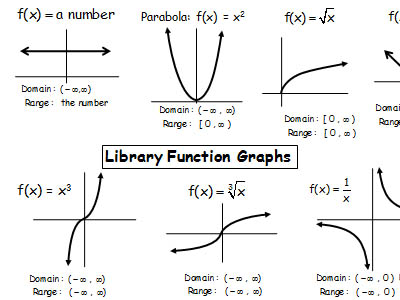Author Archives: admin
Piecewise Functions
They should be called the Frankenstein Functions, because they're monstrosities cobbled together from pieces of other library functions: lines, parabolas, square roots, cubics, cube roots, and absolute value. Like the actual Frankenstein, piecewise functions are more vulnerable if you break them into their constituent parts.
Intro to "Library Function" Graphs (a.k.a. "Parent Functions"): square roots, parabolas, cubics, etc
(click for printable PDF LIBRARY FUNCTIONS CHART)

|
